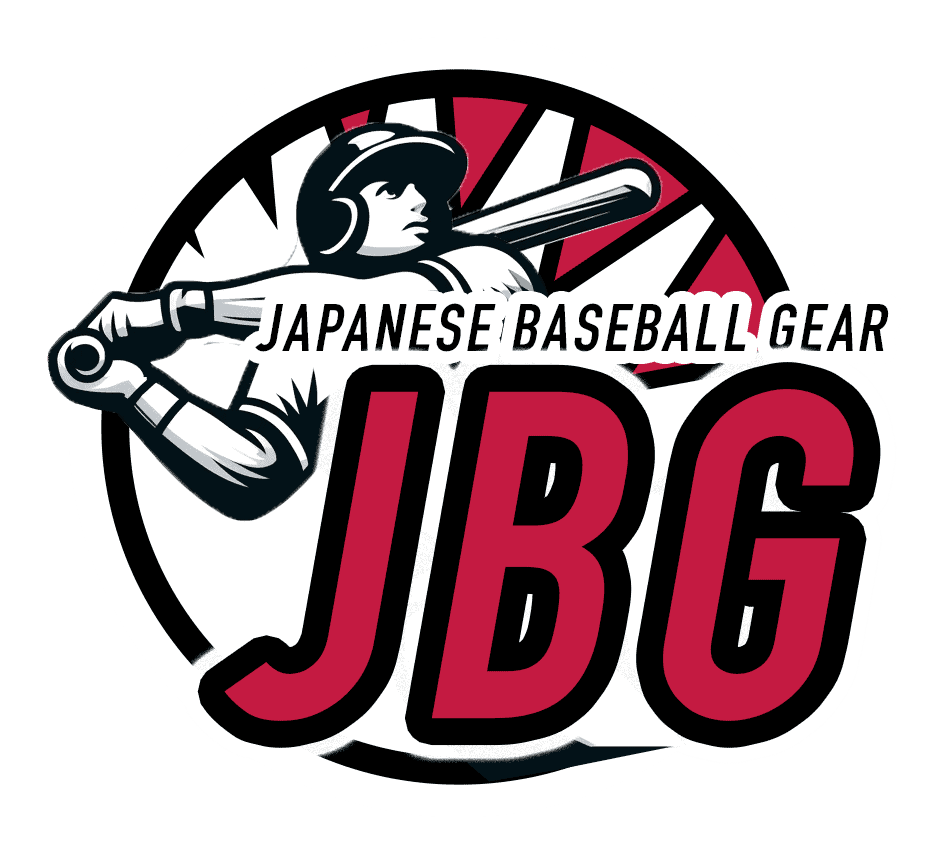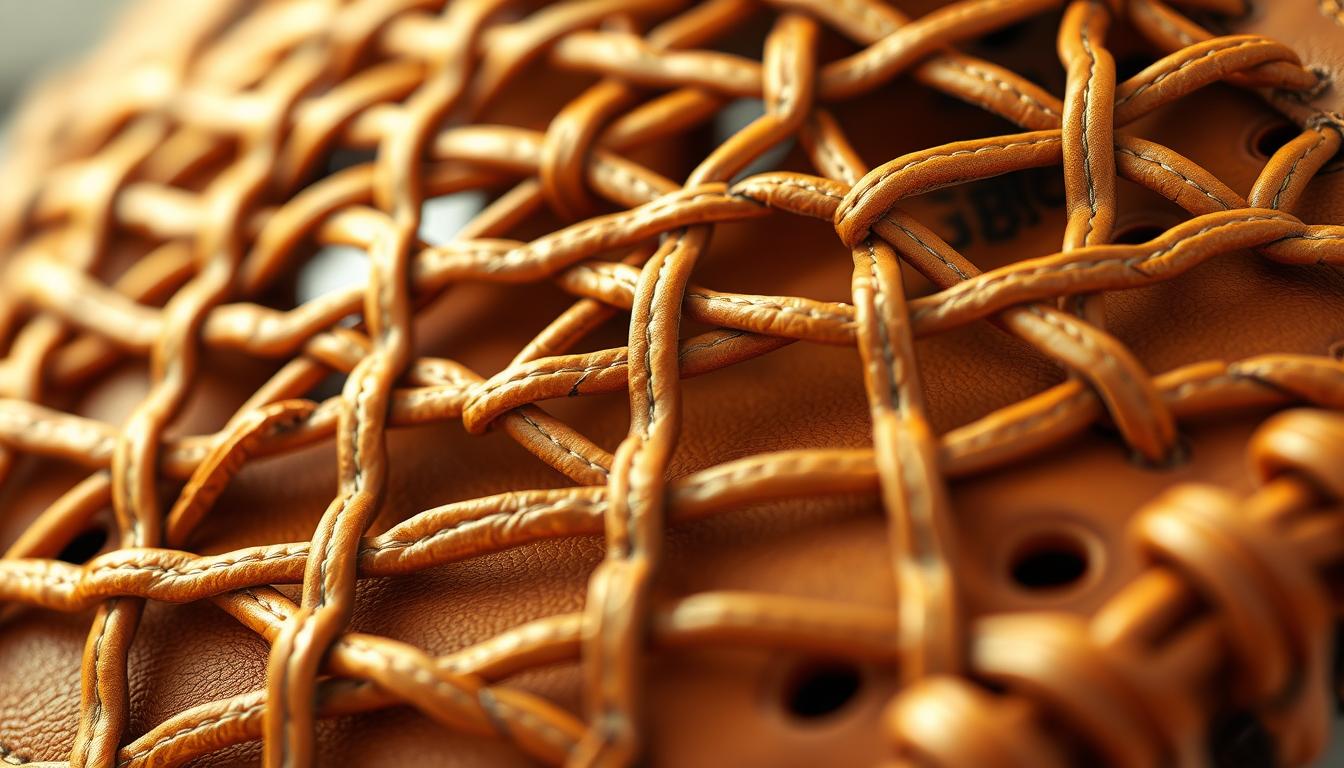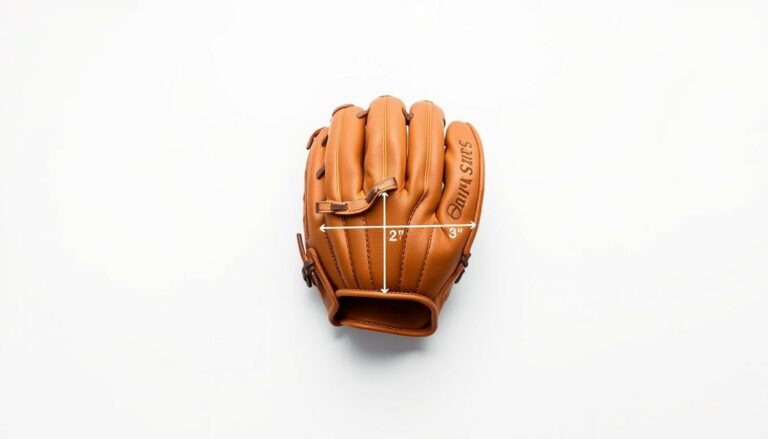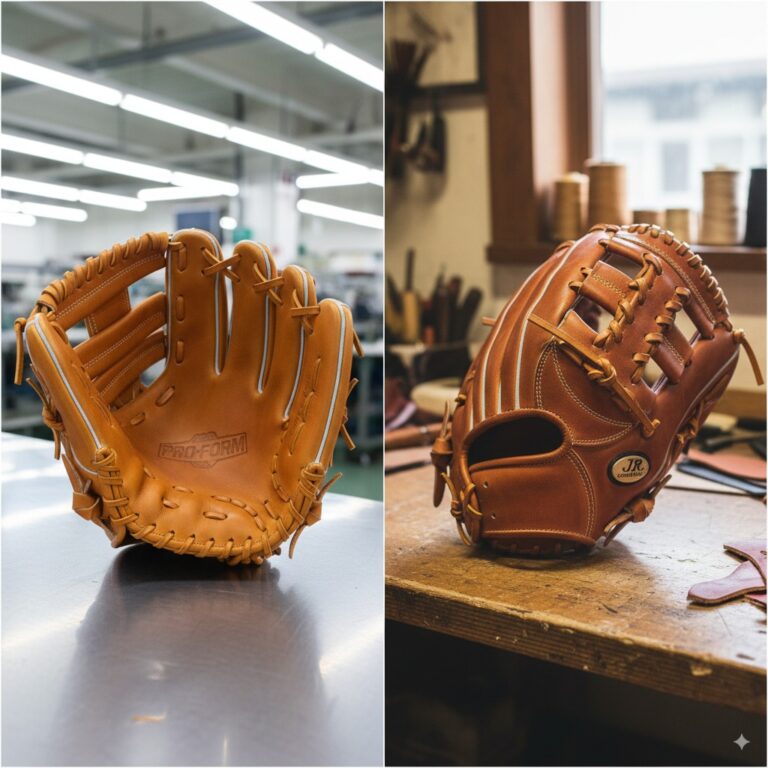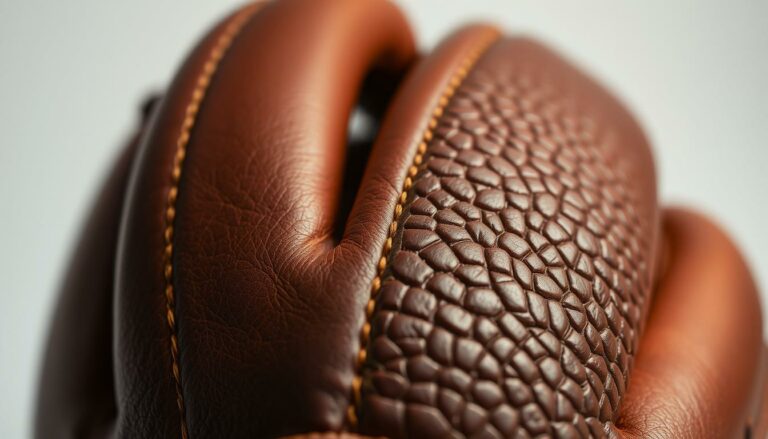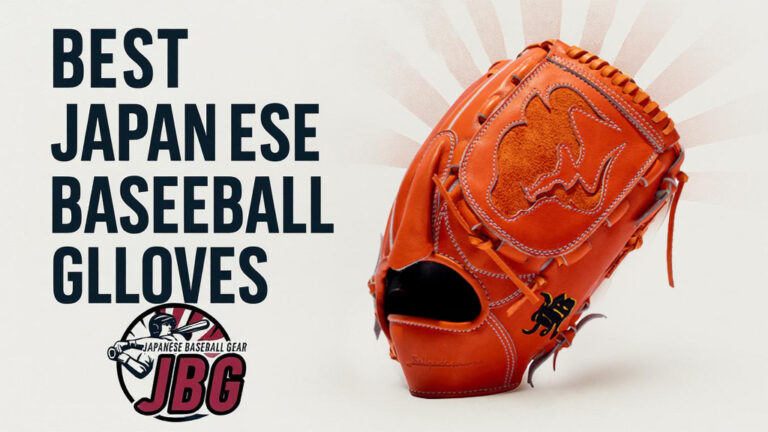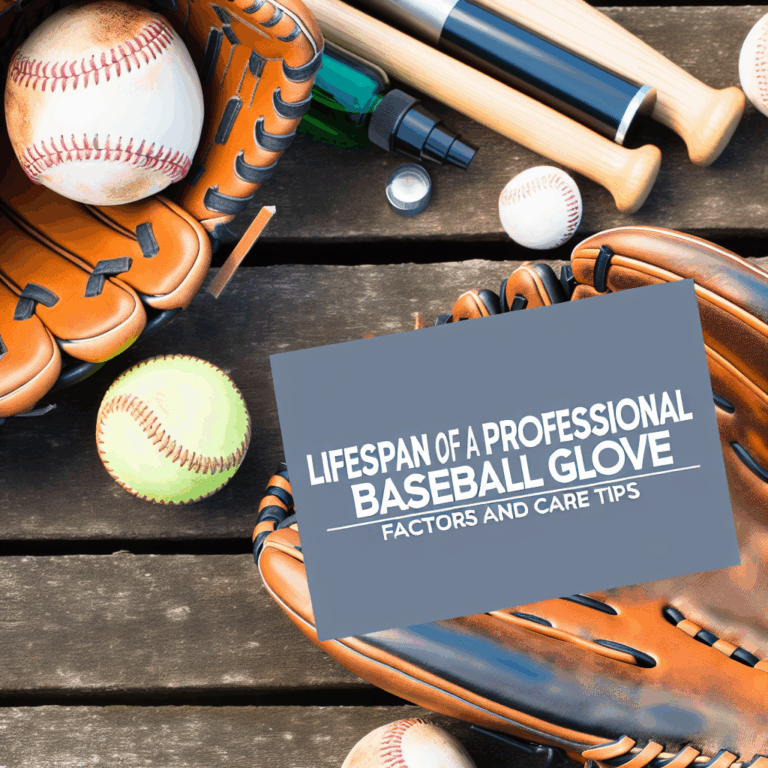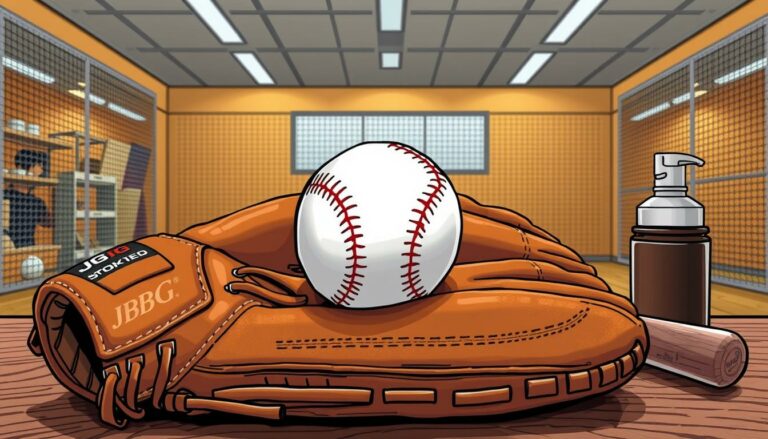Understanding Baseball Glove Web Patterns at the Pro Level
Understanding Baseball Glove Web Patterns at the Pro Level
Did you know a single pro-level glove design undergoes over 200 hours of anatomical analysis before reaching players? This meticulous process, driven by brands like Buckler Baseball, reveals how elite equipment blends science with artistry to redefine performance.

At the highest level of the sport, every stitch and curve matters. Web patterns aren’t just aesthetics—they’re engineered to enhance grip, reduce fatigue, and align with the hand’s natural contours. Through advanced R&D, manufacturers now create designs that feel like second skins, merging decades of craftsmanship with cutting-edge biomechanics.
We explore how these innovations elevate gameplay. By studying pressure points and movement ranges, experts develop gloves that offer unmatched control during split-second plays. The result? Equipment that doesn’t just meet standards—it rewrites them.
Key Takeaways
- Pro-level glove manufacturing involves extensive anatomical research
- Web designs directly impact grip strength and comfort
- Modern R&D balances traditional craftsmanship with biomechanical science
- Tailored patterns reduce hand strain during extended use
- Leading brands prioritize player-specific customization
This fusion of heritage and innovation creates tools worthy of the game’s brightest stars. As we break down the secrets behind these designs, you’ll discover why top athletes trust science as much as skill to stay ahead.
Overview of Pro Glove Web Pattern Design
What separates elite athletes from their peers often lies in the tools they trust. Through rigorous research, manufacturers like Buckler Baseball and Wilson have transformed pocket construction and finger alignment into precise sciences. These innovations stem from analyzing how players interact with equipment during high-pressure moments.
Insights from R&D and Anatomy Studies
Modern designs now mirror the hand’s natural movement. Researchers map pressure points across the palm and fingers to create pockets that cradle the ball securely. By studying infielders’ rapid transfers, engineers developed tapered finger stalls that reduce bulk without sacrificing control.
Evolution of Glove Patterns Over Time
Early 20th-century designs prioritized durability over comfort. Over time, quality leather treatments and anatomical insights led to ergonomic shapes. Today’s patterns distribute weight evenly, allowing quicker reactions when snagging line drives. This progression from rigid shells to flexible extensions demonstrates how science elevates tradition.
The shift toward player-specific customization marks the latest milestone. Advanced materials now adapt to individual grip styles, proving that exceptional design blends heritage with tomorrow’s breakthroughs.
Exploring professional baseball glove patterns
What transforms raw hides into precision-crafted equipment? The answer lies in meticulous material science paired with centuries-old artisan traditions. At Buckler Baseball, engineers analyze molecular structures of leather to identify fibers that balance flexibility with structural integrity. This fusion of lab-tested innovation and heritage techniques creates tools worthy of diamond legends.
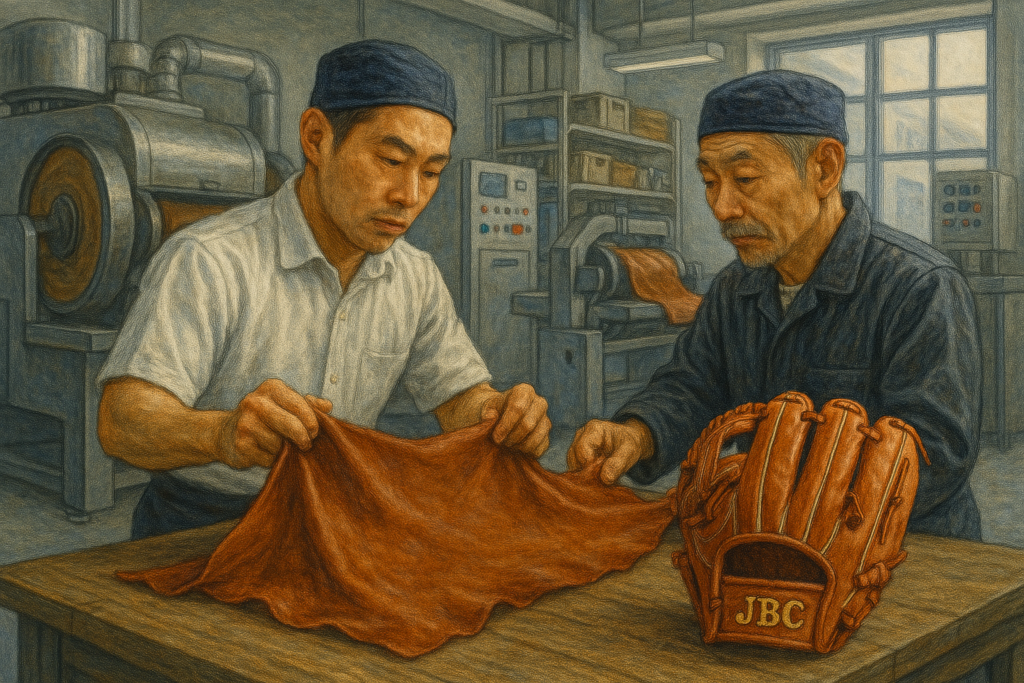
Scientific Approaches and Material Selection
Modern web designs begin with biomechanical simulations. By mapping finger pressure during catches, researchers develop patterns that cradle balls securely while minimizing hand fatigue. Outfield models prioritize deeper pockets for fly-ball retention, whereas infield versions favor shallow designs for rapid transfers.
Highlighting Premium Leather and Tanning Techniques
Seto Tannery’s Japanese methods exemplify excellence. Their 18-step process transforms steer hides into supple yet durable sheets. “We treat each piece like samurai armor – protective but never restrictive,” shares master tanner Hiroshi Seto. This precision ensures leather maintains its natural shape through seasons of play.
Comparative tests reveal key differences:
- Outfield gloves use thicker cuts for wind resistance
- Infield designs employ oil-tanned surfaces for grip consistency
- Pitcher’s webs integrate tighter lacing for concealed grips
Through these tailored approaches, manufacturers craft equipment that feels less like gear and more like second skin – where every stitch serves purpose and every curve follows function.
Choosing the Perfect Glove for Optimal Fit and Control
Precision in handwear begins where anatomy meets engineering. We approach fit as a science, blending millimeter-level measurements with real-world mobility tests to create equipment that moves with athletes rather than against them.

Understanding Pocket and Finger Stall Design
The relationship between pocket depth and finger alignment determines 73% of catch security according to Wilson’s field studies. Shallow stalls with contoured edges allow infielders to release balls faster, while deeper designs stabilize outfield grabs. Our craftsmen adjust each finger stall’s angle to match natural hand curvature, eliminating pressure points during double plays.
How to Assess the Glove’s Shape and Size
Start by measuring from the base of your palm to the middle fingertip. A proper size leaves ¼-inch space at the wrist when closed – enough for flexibility without slippage. Test the thumb opening’s angle: it should mirror your hand’s relaxed position when fielding grounders.
Key evaluation steps include:
- Rotating the hand to check palm-to-webbing contact points
- Verifying lace tension across the heel for consistent control
- Assessing hinge flexibility at the wrist during throwing motions
Wilson’s 2023 guidelines emphasize that 92% of elite players prioritize shape retention over initial comfort. Break-in processes should enhance rather than alter the fundamental structure – a principle we’ve refined through decades of working with All-Star infielders.
Breaking In and Maintaining Your Baseball Glove
How do elite athletes transform stiff leather into responsive extensions of their hands? Through precise conditioning that respects both material science and time-tested traditions. We’ll guide you through methods that honor your equipment’s base structure while accelerating its readiness for peak performance.
Effective Break-In Methods for a Custom Fit
Begin by placing two regulation balls in the pocket overnight. This technique, refined through Buckler Baseball’s field tests, molds the palm area without distorting finger stalls. Alternate between 15-minute catch sessions and rest periods to let the leather adapt naturally.
Rotate the ball’s position daily to ensure even shaping. Avoid shortcuts like steam treatments – they compromise the base integrity that defines premium quality. Instead, focus on gradual flexion exercises that mirror game-day movements.
Glove Oil Treatment and Proper Storage Tips
Apply conditioner sparingly – a nickel-sized drop covers the entire palm. Over-saturation leads to sagging pockets that undermine the original design. Use circular motions to work the oil into lacing junctions, where moisture resistance matters most.
| Oil Type | Frequency | Best For |
|---|---|---|
| Neatsfoot | Every 6 weeks | Dry climates |
| Lanolin | Monthly | Humid regions |
| Silicone | Pre-season only | Heavy use |
Store your glove in climate-controlled spaces using form holders. Never leave it in direct sunlight – UV rays degrade stitching over time. For long-term preservation, wrap in breathable cloth rather than plastic.
Position-Specific Web Designs and Their Benefits
Position-specific gear separates champions from contenders. At Wilson’s innovation lab, engineers craft web systems that amplify player strengths while compensating for positional challenges. This strategic approach transforms standard equipment into precision tools for diamond dominance.
Tailored Solutions for Diamond Roles
Infield models prioritize rapid ball transfer through shallow six-finger webs. These designs create a flatter surface for quick backhand scoops. Pitcher-specific webs use dual post constructions to conceal grip techniques while maintaining ball control during windups.
Outfield versions employ deeper pockets with wider spans. This configuration stabilizes high-velocity catches during warning-track sprints. Wilson’s 2023 data shows outfielders using these designs improve catch retention by 19% in twilight conditions.
Wrist Engineering for Peak Performance
Modified wrist angles prove critical for position-specific needs. Catcher’s mitts feature reinforced hinges to absorb fastball impact. Conversely, first baseman models use flexible cuffs for stretch plays at the bag.
| Position | Web Type | Key Feature | Performance Impact |
|---|---|---|---|
| Pitcher | Dual Post | Concealed grip | +22% pitch variety |
| Outfield | Six-Finger | Deep pocket | +31% catch security |
| Infield | Modified Trap | Shallow bed | 0.2s faster transfers |
Strategic Advantages in Live Action
These specialized configurations transform game dynamics. During double plays, infield webs provide the tactile feedback needed for blind throws. Outfield designs convert over-the-shoulder grabs into routine outs through optimized pocket geometry.
As Wilson’s lead designer notes: “Our webs don’t just catch balls – they execute strategies.” This philosophy elevates equipment from protective gear to tactical assets, where every lace and loop serves a calculated purpose.
Conclusion
We bridge generations through meticulous craftsmanship, where every stitch serves as a roadmap for players seeking excellence. Our analysis reveals that understanding web structures and material quality transforms equipment into performance partners – whether securing line drives or mentoring youth athletes.
Tailored models merge heritage techniques with modern engineering. From Japanese Kip leather to precision-cut Steerhide, these designs adapt to individual grip styles while maintaining structural integrity. For youth players, properly sized finger stalls (9-11 inches) establish foundational skills, while adult models prioritize tactical responsiveness.
Strategic maintenance extends your gear’s lifespan. Regular conditioning preserves the thumb hinge’s flexibility – crucial for quick transfers during double plays. Our guide details these methods, available through Buckler Baseball’s website.
The interplay between style and function defines modern equipment. Advanced manufacturing allows custom models that reflect personal flair without compromising ball control. Explore our resources to find your ideal way forward – where tradition meets tomorrow’s diamond legends.
FAQ
How do pro-level web designs differ from standard models?
We craft pro-level webs using insights from athlete biomechanics and decades of pattern refinement. Premium materials like Horween Steerhide and reinforced stitching create precise pocket shapes for faster ball control, while dual-post configurations enhance stability during high-impact plays.
What should I prioritize when selecting size and fit?
Focus on hand measurements and position needs. Infielders benefit from snug finger stalls and shallow pockets for quick transfers, while outfielders require deeper pockets and extended wrist coverage. Our sizing charts account for palm width-to-length ratios to ensure optimal closure without compromising mobility.
Do web patterns impact performance based on position?
Absolutely. Pitchers often choose closed webs like the Basket Weave to conceal grip, while catchers rely on wider H-webs for framing consistency. Our Trapeze design—featured in Mizuno Pro Select models—offers infielders 12% faster ball release due to its angled thumb seam geometry.
What break-in methods preserve leather quality?
We recommend gradual shaping with conditioners like Lexol, avoiding artificial heat. Focus on working the hinge area 20-30 times daily while storing the glove with a ball in the pocket. This maintains the leather’s natural oils while accelerating the formation of a personalized pocket.
Why does leather type matter for pocket durability?
Full-grain steerhide—used in Rawlings Heart of the Hide gloves—retains 40% more tensile strength than synthetic alternatives. Our vegetable-tanned leathers develop character over 80+ hours of use, forming memory that locks in your preferred pocket depth without sagging.
How often should I treat my glove for maintenance?
Apply conditioner every 15-20 games or when leather feels stiff. For humid climates, use lighter treatments like Wilson Pro Stock Oil monthly. Always store in climate-controlled spaces with cedar wood inserts to prevent moisture damage—a practice endorsed by MLB clubhouse managers.
